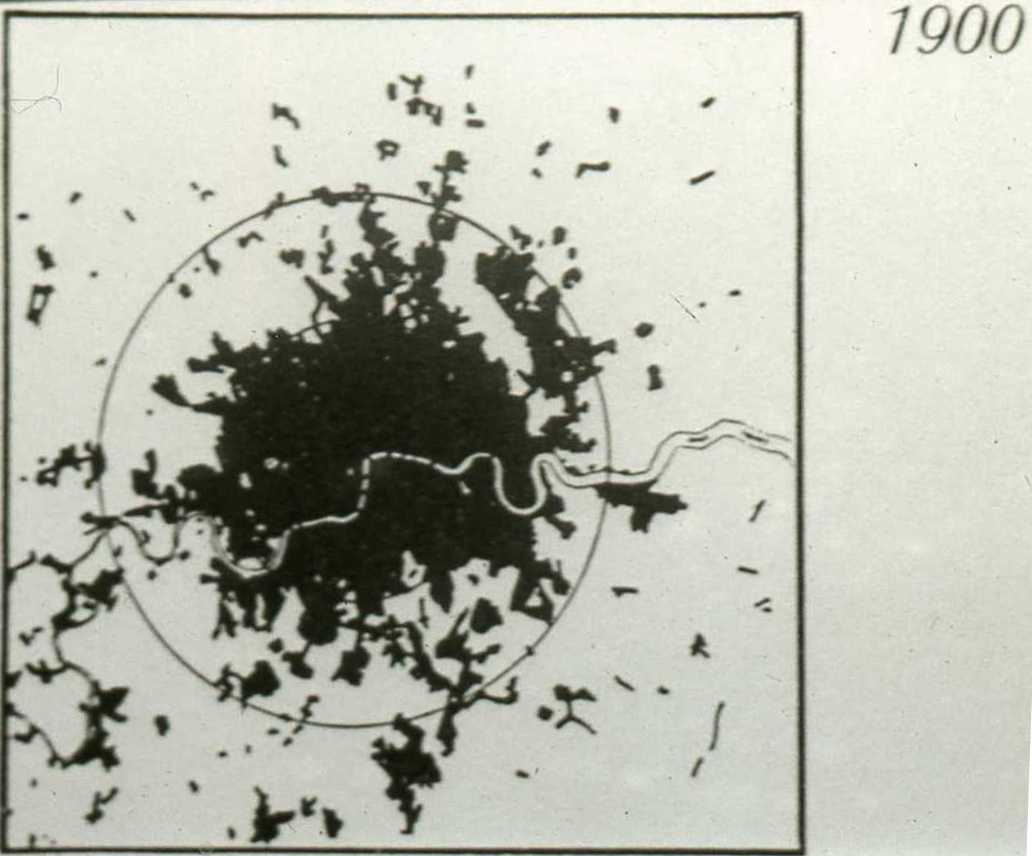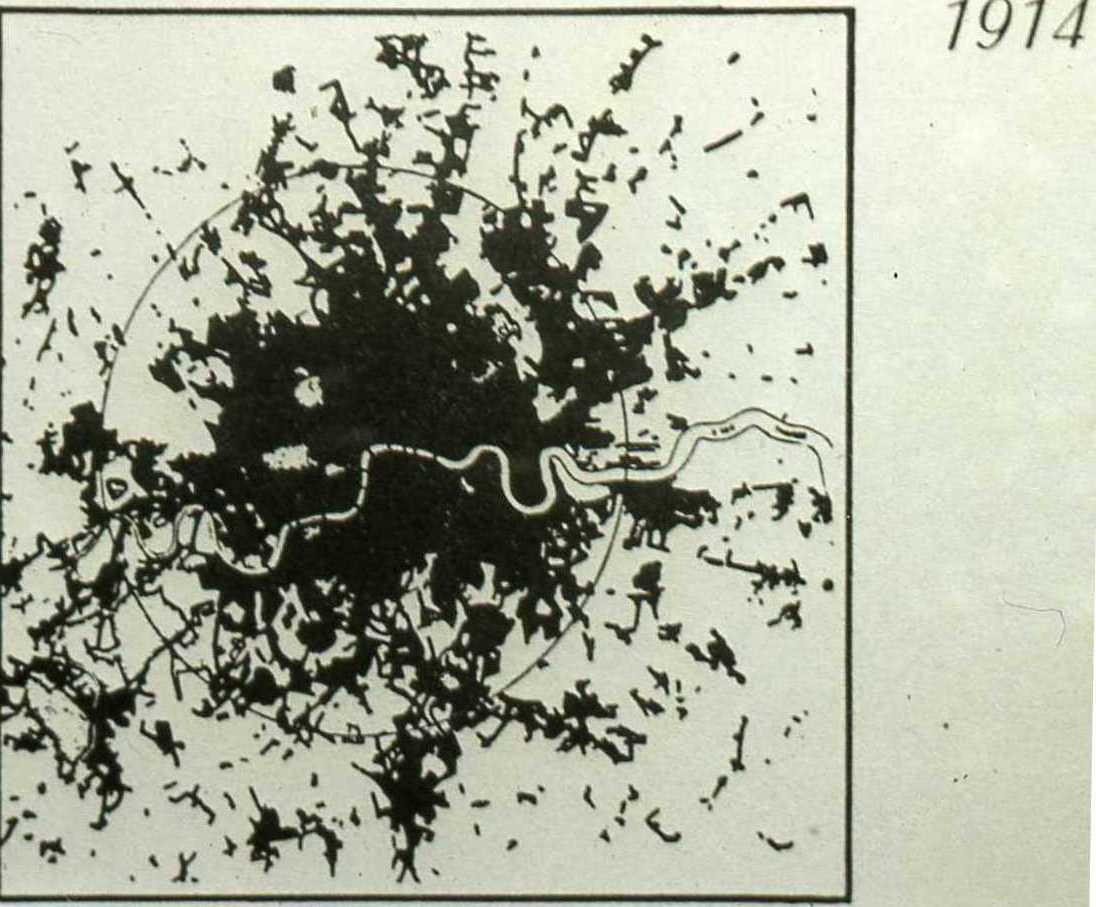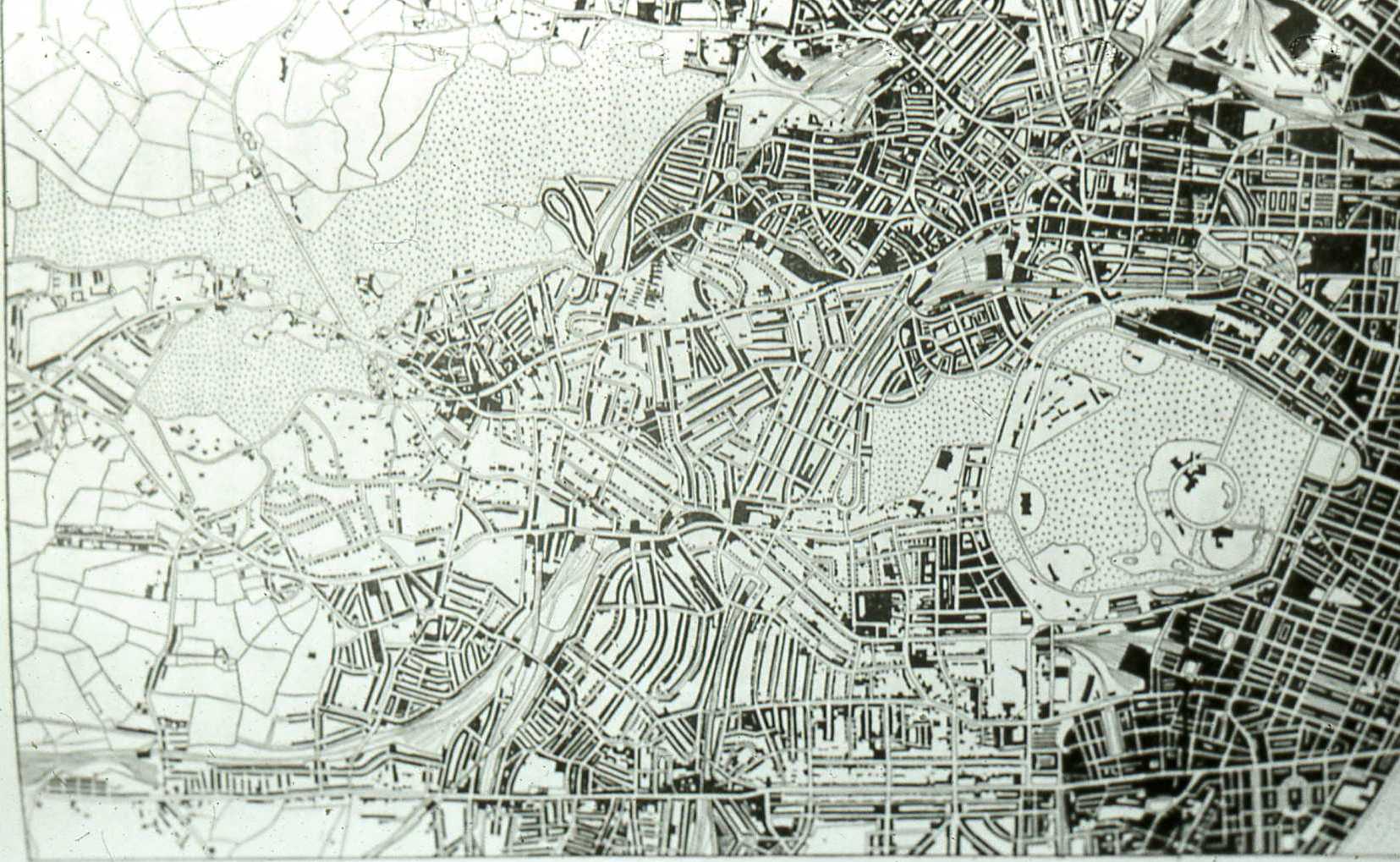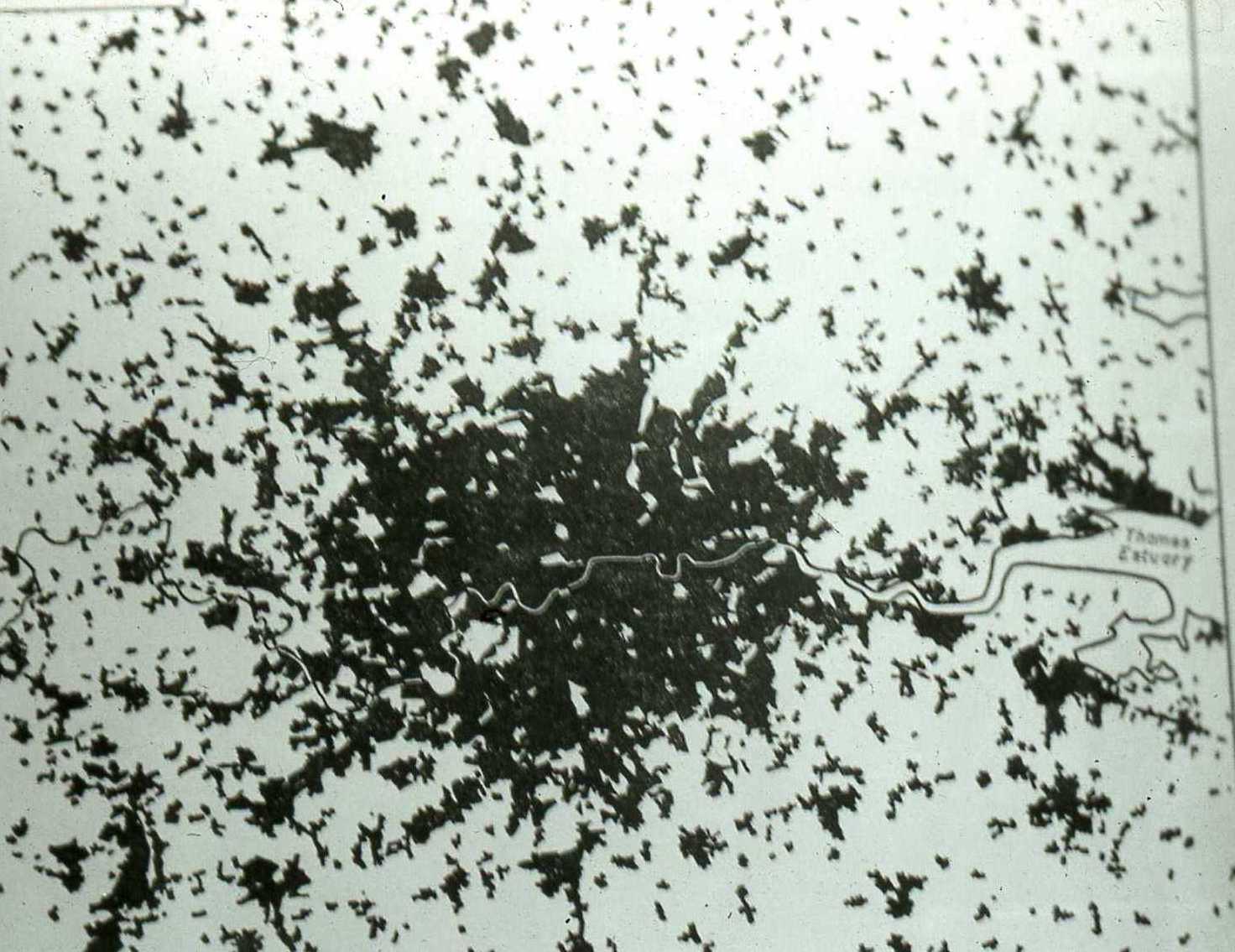
Physical Growth of London,
1840-1960
By the decades, 1840-1914
Northwest London reaches out, 1814-1914
London expands like a crab nebula, 1800-1960
Return to HIST 103 second week syllabus
<>1872:French writer Hippolyte Taine published travel accounts of two visits in England, in 1858 and 1871, Notes sur l'Angleterre. He described the approach to London by boat up the Thames River =
Right and left we pass small country houses, pretty, clean, and freshly painted. Green grass is visible on the horizon. Here and there large trees are well-placed and well-grouped. Gravesend on the left heaps its brown houses around a bluish steeple. Vessels, warehouses, increase in number. One feels that one is approaching a great city. The small landing-docks project fifty paces into the river over the shining mud which the fallen tide leaves dry. Every quarter of an hour, the imprint and the presence of man, the power by which he has transformed nature, become more visible = Docks, storehouses, shipbuilding and caulking yards, stocks, habitable houses, prepared materials, accumulated merchandise. To the right appears the skeleton of an iron church which is being prepared here for construction in India. Astonishment is superseded by bewilderment. From Greenwich, the river is nothing but a street, a mile or more in breadth, where ships ascend and descend between two rows of buildings -- interminable rows of a dull red brick or tiles -- bordered with great piles stuck in the mud for moorings vessels here to unload or to load. Now appear even more storehouses for copper, stone, coal, cordage, and the rest. Bales are constantly stacked in piles, sacks hoisted, barrels rolled. Cranes creek, capstans sound out. The sea reaches into London by river. London is an inland port. New York, Melbourne, Canton, and Calcutta are in direct connection with this place. The sight of the canals through which the docks communicate with the sea make an even more astonishing impression. They form cross-streets, and they are streets for ships. One suddenly perceives an endless line of them. From Greenwich Park, where I ascended last year, the horizon is bounded with masts and ropes. The incalculable indistinct rigging stretches a spider web in a circle against the sky. This is certainly one of the great spectacles of our planet. To see a similar conglomeration of buildings, men, vessels, and business, it would be necessary to go to China.
However, there is yet more. On the river further to the west into the city a tangled forest of yards, masts, and rigging rises. These are the vessels which arrive, depart or anchor. At first they gather in groups, then in long rows, then in a continuous heap, crowded together, massed against chimneys of houses and warehouse pulleys. All the tackle is worked by incessant, regular, gigantic labor. All is enveloped in a foggy smoke which is penetrated with the light of the sun, its golden rain sifted. Striking and unusual reflections balance in the undulations of brackish, tawny, half-green, half-violet water. It might be said that this was the heavy and smoky air of a large hothouse. Nothing is natural here. Everything is transformed, artificially wrought from the toil of man, up to the light and the air. But the hugeness of the conglomeration and of the human creation gets in the way of our thinking about this deformity and this artifice. Despite the absence of pure and healthy beauty, the swarming and grandiose life remains. The shimmering of embrowned waves, the scattering of the light imprisoned in vapor, the soft whitish or pink tints which cover these vastnesses, diffuse a sort of grace over the prodigious city, having the effect of a smile upon the face of a shaggy and blacked Cyclop. [Later, Taine shares a statistic given by a London merchant = At any given time, from 5000 to 6000 vessels were docked in London.. The annual total was 40,000 vessels]
[lxt#1 shows and
discusses the 1830-35 painting by Joseph Mallord William Turner, The
Thames above Waterloo Bridge]
[lxt#2]
[Complete works of Turner (all lxt~,
all paintings]
[Preview of 2014 movie MR. TURNER]
*1904:French impressionaist painter Claude Monet, House of
Parliament with the sun breaking through the fog





1914 [repeat sequence] [top]

1814:Northwest London reaches out [next]

1864:Northwest London reaches out [next]

1914:Northwest London reaches out [repeat sequence] [top]

1800:Pre-industrial London [century
and one half later]

1960:"Post-industrial" London [repeat] [top]
